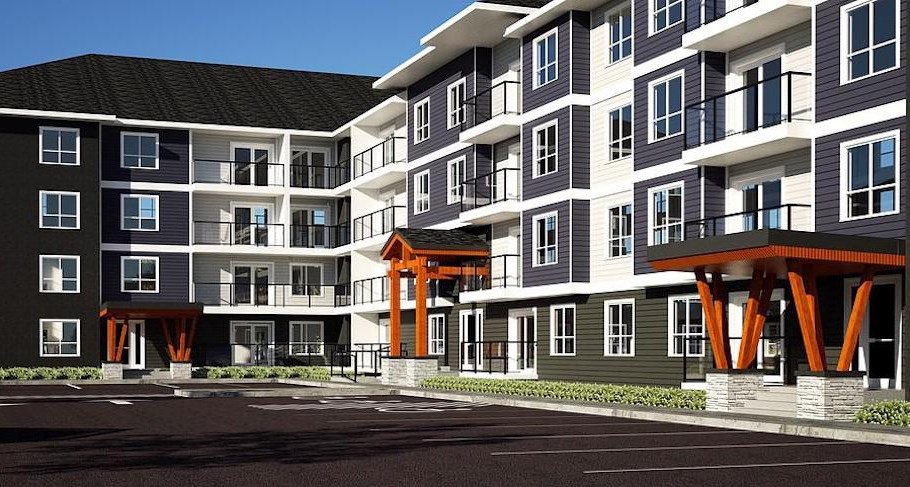Winnipeg and Saskatoon have held steady in the multi-family rental market, despite a pandemic that has disrupted the sector in other Prairie markets.
And it is Class-B and Class C assets, not new purpose-built rental apartment buildings, that were the top Prairie performers in 2020, according to the annual Rental Market Report released January 28, 2021 by Canada Mortgage and Housing Corp.(CMHC).
The latter is a North American trend seen during the pandemic. Older Class C and B apartment buildings in Canada have seen lower vacancy rates and less disruption in rental income that more expensive new buildings, CMHC data shows.
In the U.S., while Class B and C properties experienced a minor rent reductions of less than 1 per cent during the pandemic, rents in Class A assets dropped 2.3 per cent in 2020 compared to a year earlier, according to a survey released January 29 by Royal Lepage U.S.
The CMHC report also showed that more than 95 per cent of Canadian tenants managed to make their rental payments during the pandemic. Only 6.1 per cent of more than 1.9 million rental units were in arrears as of October 2020. This represented approximately $150 million in total rent in arrears, or just 0.59 per cent of the total expected rent.
Here is a snapshot of the Prairie rental market, as of October 2020, by CMHC:
Winnipeg: Vacancy rate, 3.8 per cent (up from 3.1 per cent in 2019); Average rent: $1,107 (up 3 per cent from 2019).
While the overall vacancy rate inched up in Winnipeg, vacancies in new rental buildings completed since 2015 reached 7.4 per cent. A key reason is the new builds have higher average rents, which tCMHC estimates excludes a large portion of the population.
“In the past two years, there were 2,465 rental units added to the Winnipeg universe with an average rent of $1,576. This rent would be affordable to individuals with a before-tax income of $63,000, which represents roughly 28 per cent of rental households,” CMHC explained.
However, the vacancy rate for condominium rentals remained stable at 1.7 per cent,
Saskatoon: Vacancy rate, 5.9 per cent, unchanged from 2019. Average rent: $1,078, up 2 per cent from 2019.
The vacancy rate for new (post-2015) rental buildings is 8.8 per cent and the average rent is also higher, at $1.414, than the general market, but new rental buildings comprise just 4 per cent of the total rental stock.
Regina: Vacancy rate, 7.5 per cent, unchanged from 2019. Average rent: $1.061, up 0.5 per cent from 2019.
Given the expansion of the rental inventory over the past five years, higher vacancy rates have meant that renters have had more choices, and landlords had been offering incentives. This trend appears to be reversing now that completion of new rental supply has slowed, particularly following a 76 per cent plunge in new rental construction in 2019. As of October 2020, construction of new apartment rental units had improved just 13 per cent.
Calgary: Vacancy rate, 6.5 per cent, up from 3.9 per cent in 2019. Average rent: $1,195, unchanged from 2019.
Purpose-built rental construction in Calgary has been steady since 2017. As a result, the primary rental market universe saw an increase of 3.2 per cent in 2020.,For buildings built post-2015, the vacancy rate was 10.1 per cent. The higher vacancy rate is likely due to the higher rent for newer units combined with prevailing economic conditions, and weaker migration, CMHC suggests.
In the past decade, Calgary saw a rapid growth in rental condominium apartments, from 11,168 secondary rental units in 2010 to 26,240 in 2020. This growth slowed down last year and a smaller percentage of condominium apartments were used for rental. Compared to 2019, the number of condo rental units grew by just 1.3 per cent in 2020, the second lowest rate since 2011 Average condo rents are $1.466 per month.
Edmonton: Vacancy rate. 7.2 per cent, up from 4.9 per cent in 2019. Average rent: $1,153, unchanged from 2019.
The increase in the vacancy rate was due to higher supply and slower rental demand as a result of weaker economic conditions and lower migration.
The average rent for new units in structures completed in the past two years is $1,513, which is 31.2 per cent higher than the average rent of purpose-built rental units of all ages. However, the vacancy rate for the newer rental units was 12 per cent, nearly 5 per cent higher than the vacancy rate for older apartment buildings.
The vacancy rate for condo rentals decreased to 2 per cent in 2020, from 2.5 per cent a year earlier, due to the increase in demand for condo rentals in downtown Edmonton. The increase is in spite of rents, that were on average, 11.3 per cent higher than those for purpose-built rental apartments. In 2020, 38.3 per cent of the city’s condominium inventory was used as rental units, unchanged from 2019, CMHC reports.



